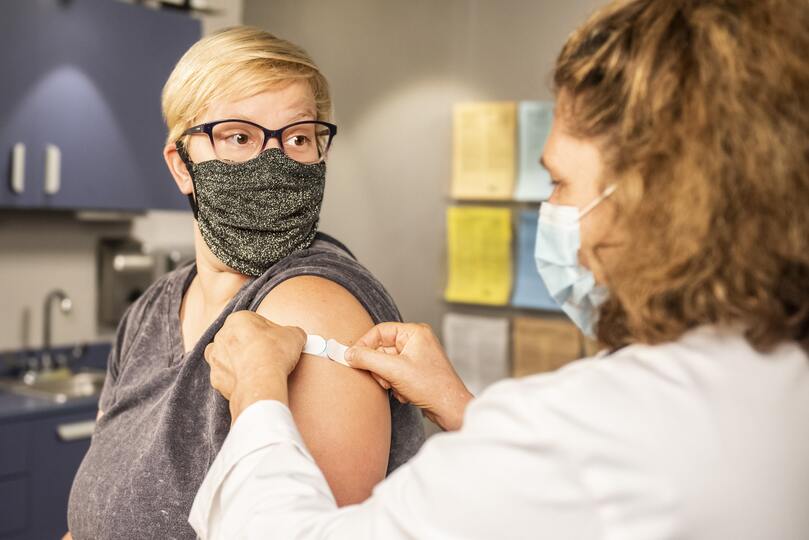One of the aims of the IMMUNION project is to develop, discuss and pilot communication and community engagement tools to increase vaccine uptake in target communities in four project partner countries: Greece, Italy, Latvia and Romania. Specifically, partners aimed to gather, select and make available online a suite of communication, media and peer engagement tools to meet the requirements of the different national scenarios and address specific target groups within each participating country. This activity has been planned to create awareness of existing gaps and strengthen the necessity of cooperating with stakeholders.
The first step of this process was to develop, by September 2021, a Reference Grid investigating national scenarios in the four partner countries regarding vaccine hesitancy and uptake. This activity aimed to answer questions such as: Which are the major determinants of vaccine hesitancy in Greece, Italy, Latvia, and Romania? Which vaccines and population groups do they address primarily? Which key country-specific issues should be considered? The Reference Grid includes an analysis of the scientific and grey literature on vaccine hesitancy determinants and barriers to uptake in each of the four countries. It serves as a first brick in building up an overview of national scenarios, mainly based on the vaccine hesitancy determinants as grouped in three main categories (contextual, individual, vaccine-specific influences).
Following on from this, partners agreed on an operational definition of Tools for vaccination communication and community engagement, and then mapped and selected tools (published within the last decade) according to two categories:
- Tools produced by national Ministries of Health, public health institutes and relevant organisations or national-level associations in the four partner countries (Greece, Italy, Latvia, Romania), such as federations and/or societies representing professional categories (e.g., General Practitioners, Paediatricians, Nurses, Obstetricians);
- Tools produced by international bodies, authorities, organisations, EU-based projects and programmes, and other comparably relevant experiences in the field.
The selected tools are available online on the Coalition for Vaccination/IMMUNION website.They are made easily accessible to end-users through a filtering mechanism (allowing users to select language, disease, target audience and document type). The online toolbox is not intended as a standalone final product. Indeed, it will be continuously updated, considering both partners' and stakeholders' suggestions (a specific form is embedded on the webpage inviting stakeholders to contribute to the toolbox by submitting tools which are not present in the repository).
This IMMUNION output shows a rich and challenging context for vaccine communication tools. Theoretically, institutional communication tools might be conceived as being frequently consulted by citizens and other stakeholders, even though differences in health literacy levels and the digital divide act as decisive mediating factors. Pragmatically, though, we could not investigate their effective use, as we could not extract relevant proxy indicators (i.e., downloads for materials or unique visitor logins for websites).
We indeed acknowledge a significant limitation in the failure to collect other online tools circulating via social media, which have been shown to play a relevant role in the development of vaccine hesitancy. Some overarching themes that emerged from our search are: 1) measuring the success and objectively assessing impacts is a common challenge of most health communication campaigns; 2) cross-cultural adaptation of materials is important: some documents appear to be directly translated from other languages, generally English, but health promotion messages which are initially framed in the local languages have more potential to be effective.
The results of this exercise show, on the one hand, significant heterogeneity of the contexts in which the exercise was applied (Greece, Italy, Latvia, Romania). On the other hand, it offers the opportunity to compare, learn from each other and stimulate an approach shared at the European level. This last aspect is fundamental in a globalized world, where borders are blurred and allow increasingly frequent exchanges.
This aspect could, in the future, stimulate a European approach aimed at improving vaccine uptake and tackling the determinants of vaccination hesitancy. Communication tools and vaccination campaigns could be developed in a coordinated and collaborative way using available evidence. Besides an initial context analysis, identifying target groups, monitoring and evaluating each action or intervention implemented, we strongly recommend stakeholder involvement in the different stages of new campaigns and the assessment or creation of new communication tools.
The results achieved through the Reference Grid and the creation of national toolboxes pave the way for further IMMUNION activities, which consist of national-level stakeholder roundtable discussions on piloting or co-creating new vaccine communication tools tailored to specific needs and national priorities in each country. Building upon achievements, additional items can be added to the initial selection of communication tools and stakeholder representatives can be directly involved in the appraisal of selected tools, as indicated above, for instance they can also propose new existing tools to be included in the toolboxes, and possibly co-create new ones. The toolbox will remain updated and operational after the end of the IMMUNION project (March 2023), when the Coalition for Vaccination co-chairs will take over the maintenance of the website.

